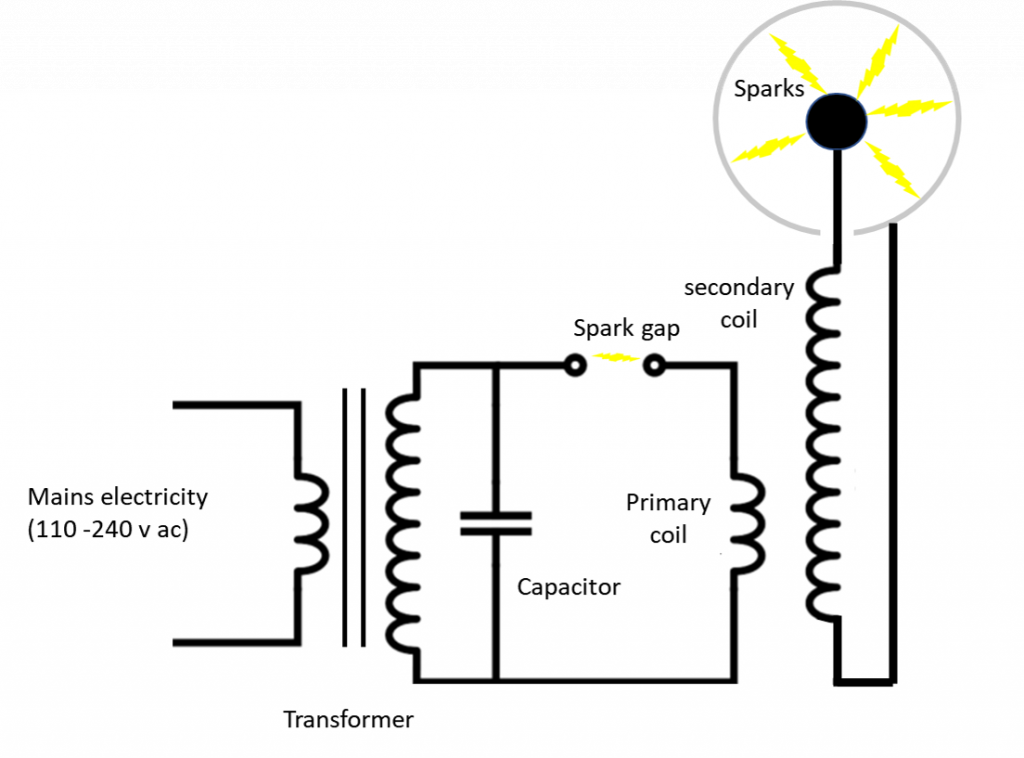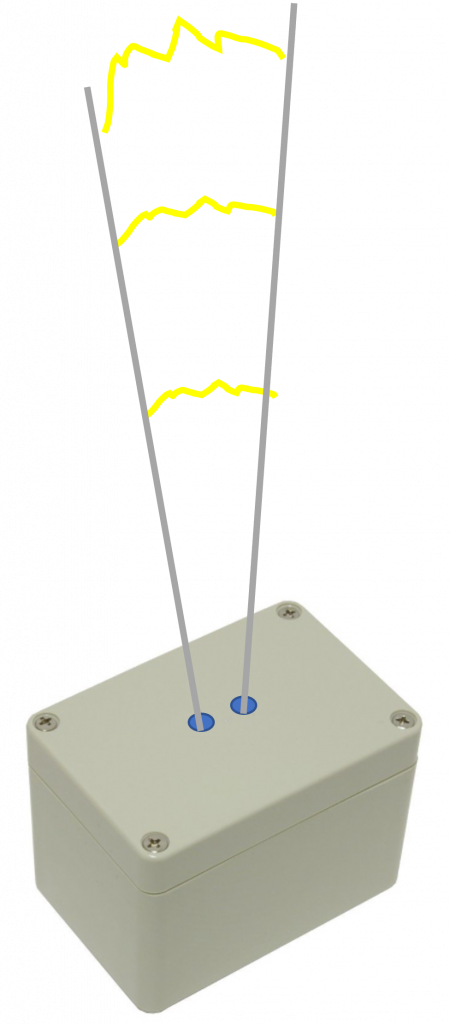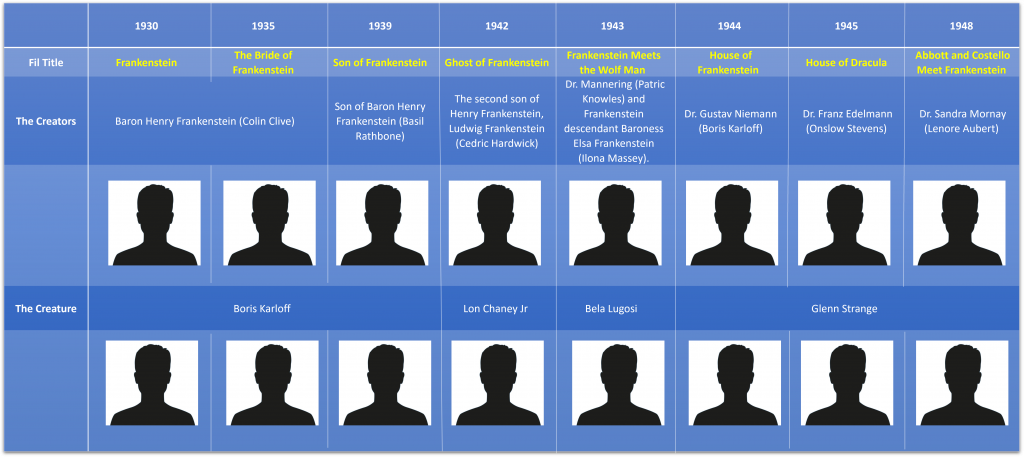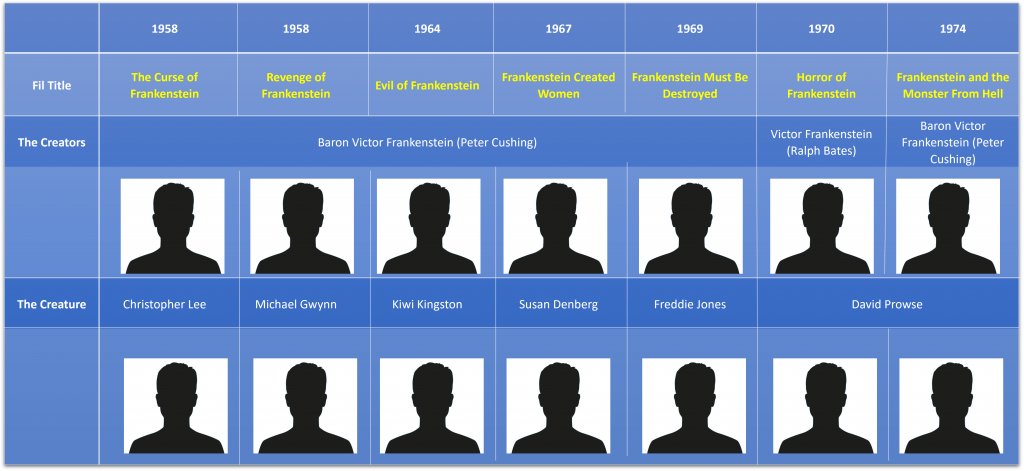Frankenstein’s Lab Equipment
I thought it interesting to consider the high voltage equipment used by Frankenstein to bring life to his creature. Much of the lab equipment used as props in the most classic film ‘Frankenstein’ (1931) from Universal Studios starring Boris Karloff, was created by Kenneth Strickfaden (1896 – 1984). Some of the equipment was reused in Mel Brook’s ‘Young Frankenstein’ (1974). Much of it is now owned by Doug Norwine, who works as the director of music and entertainment for Heritage Auction Galleries in Dallas.
https://www.moma.org/magazine/articles/28
Some of the equipment was derived from the work of Nikola Tesla from Serbia (1856 – 1943) . i.e. the Tesla Coil. Today you can buy ‘Plasma Balls’ which use these principals.
How does it work ?
A Tesla coil consists of two parts: a primary coil and secondary coil each with a capacitor. (Capacitors store electrical energy just like batteries.)
Each has an air gap. A small gap in the primary, and a larger one in the secondary (where the big sparks are produced).
A Tesla coil needs a high-voltage power source. A regular power source (mains power) fed through a transformer can produce a current with the necessary high voltage (thousands of volts).
This high voltage feeds the primary coil and capacitor. The charge in the capacitor slowly builds up before eventually breaking down the air resistance in the spark gap. Then, electricity flows across the spark gap effectively short circuiting the primary circuit , discharging it, the magnetic field collapses and this induces a larger magnetic field in the secondary coil.
The process repeats at a ‘resonant frequency’ as the charge in the primary coil and capacitor build up again. At each repeat, energy builds up in the secondary coil.
Eventually, the charge in the secondary coil gets so high that it jumps across to ground in the shortest electrical path with a dramatic large spark.
Then it can start building up it’s charge again, ready for the next spark.
The spark is akin to lightning. The spark ionizes the air, meaning electrons are separated from their atoms, creating a plasma which is more conductive than air hence the spark travels through.

Another form of such high voltage systems is the so called Jacobs Ladder.

Here, the spark jumps between two wires which diverge with a greater gap higher up. As plasma has a lower density than the surrounding air, the spark rises up.
I also find it interesting to look at a comparison between films based on Frankenstein, produced by Universal Film Studios, and those produced by Hammer Films. The tables below show a summary.


Interestingly, for Universal films, each film has mostly different scientist creating/reviving the creature, and the creature is the same character, albeit played by different actors. Hammer films on the other hand had a consistent scientist, mostly played by Peter Cushing, who created a new creature in each film.
I hope to gain copyright permissions to be able to update the silhouettes with images of all the scientists and creatures.
Just a note on the Tesla Coils, you can obviously buy plasma balls (I think pretty safe), but there are also kits available to build your own Tesla Coils ! (Good luck with that if you’re brave enough :-).
